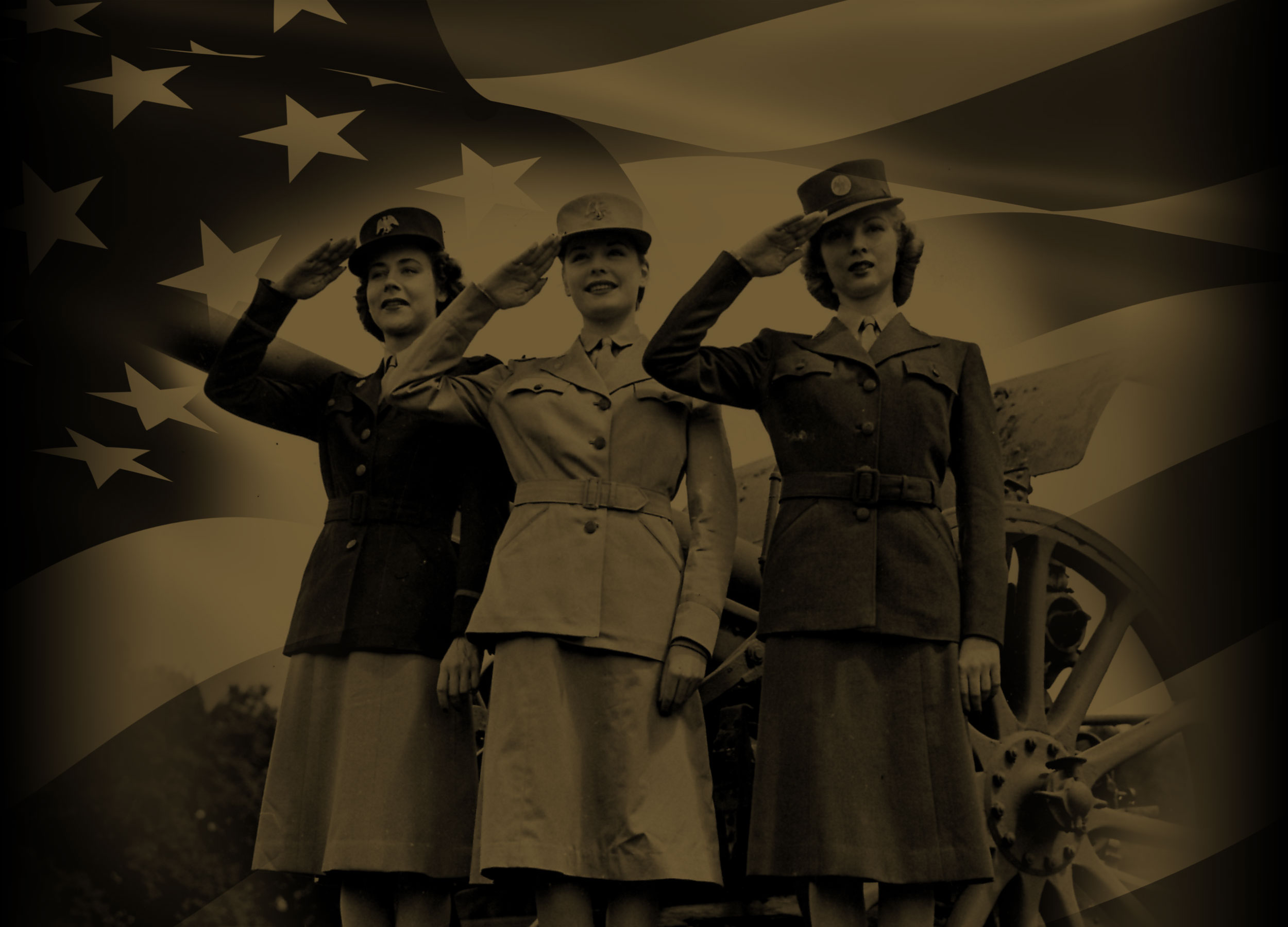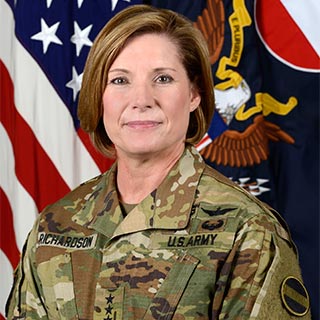
Lieutenant General
Laura J. Richardson
2017: First female deputy commanding general of U.S. Army Forces Command
2012: First female deputy commanding general of a maneuver division
READ MORE
Richardson became the deputy commanding general of U.S. Army Forces Command at Fort Bragg, North Carolina, June 17, 2017. She was promoted to lieutenant general, June 12, 2017. As deputy commanding general, Richardson will be heavily involved in ensuring the nation’s Soldiers are ready for future deployments and contingency operations.
Richardson became the deputy commanding general of support for the 1st Cavalry Division at Fort Hood, Texas, July 5, 2012. She was promoted to brigadier general on March 2, 2012, while serving at her previous assignment as the commanding general of U.S. Army Operational Test Command.
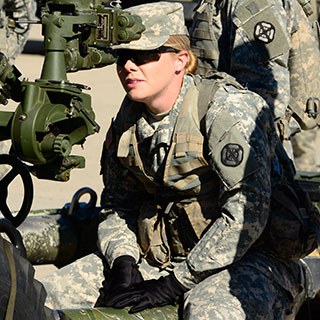
Private First Class
Katherine Beatty
2016: First female cannon crewmember (13B)
READ MORE
Beatty graduated March 11, 2016, at Fort Sill, Oklahoma. She excelled during training, earning the title of distinguished honor graduate for Class No. 12-16. She was assistant platoon guide and helped teach her peers, earned the top scores in several exams and passed her Go/No go events, including the high physical demand test.
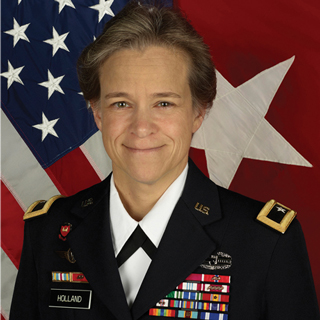
Brigadier General
Diana Holland
2016: First female commandant of cadets at the U.S. Military Academy
READ MORE
Holland assumed command, Jan. 5, at West Point, New York, becoming the 76th commandant of cadets. Holland also became the first woman to hold the title of deputy commanding general for support in a light Infantry division during her promotion ceremony to brigadier general at Fort Drum, New York, July 29, 2015. Holland graduated from the U.S. Military Academy and earned a Master of Arts degree at Duke University.
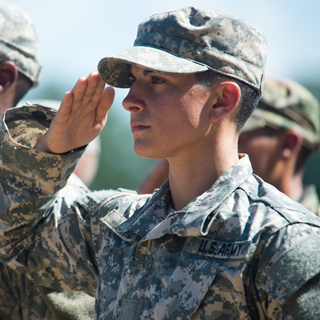
Captain
Kristen Griest
2015: One of the first female Soldiers to earn the Ranger tab
READ MORE
Griest and 1st Lt. Shaye L. Haver made history by being the first women to meet all the requirements to complete Ranger School and earn their Ranger tab. Griest also became the first woman to be branched Infantry, April 25, 2016. Griest and Haver are both graduates of the U.S. Military Academy at West Point, New York.
"I knew how badly I wanted to go [to Ranger School] when I was a second lieutenant, before I became a platoon leader," Griest said, during an Aug. 20 press conference. "I was hoping to go to this course because it is the best training the Army can provide, and I wanted to have that training before I had a platoon."
Since Ranger School opened in 1950, only 77,000 Soldiers have earned the Ranger tab. Of the 4,057 Soldiers who attempted the course in 2014, just 1,609 tacked on the tab.
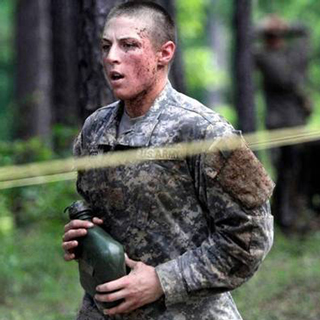
First Lieutenant
Shaye Haver
2015: One of the first female Soldiers to earn the Ranger tab
READ MORE
Haver and Capt. Kristen Griest made history by being the first women to meet all the requirements to complete Ranger School and earn their Ranger tab. Griest and Haver are also both graduates of the U.S. Military Academy at West Point, New York.
"The reasons I chose to come were the same as the men here: to get the experience of the elite leadership school and to give me the opportunity to lead my Soldiers the best that I can," said Haver. "I think if females continue to come to this course, they can be encouraged by what we have accomplished, but hopefully they're encouraged by the legacy that the Ranger community has left."
Since Ranger School opened in 1950, only 77,000 Soldiers have earned the Ranger tab. Of the 4,057 Soldiers who attempted the course in 2014, just 1,609 tacked on the tab.
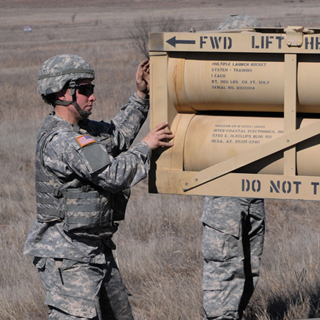
Corporal
Erica Gunter
2015: The first woman of 13M Military Occupation Specialty to become a launcher chief
READ MORE
Gunter made history when she was promoted to a corporal and assigned as a Multiple Launch Rocket System launcher chief, a position usually held by a staff sergeant. Her new position means that she is the first woman in the 13M military occupation specialty to enter the non-commissioned officer corps and be assigned as a launcher chief. While other female 13Ms have attained such status, they were all reclassified into the MOS, whereas Gunter began her career as a 13M two years ago during the second 13M Advanced Individual Training class open to women.
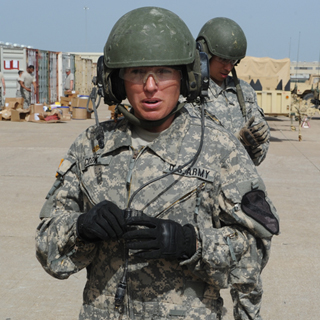
Major
Chrissy Cook
2014: The first female Bradley commander to lead her crew to "Top Gun" status
READ MORE
Cook, an engineer officer, made history in the 1st Cavalry Division, July 8, 2014, when she led her Bradley crew to "Top Gun" status during gunnery. She led her crew to a top score of 835 with nine of 10 engagements, passed to seal "Top Gun" status, June 17. This marks a page in the history books as the Army continues to open doors to female service members for service in direct combat roles. As an engineer, Cook's branch has long been open to males and females.
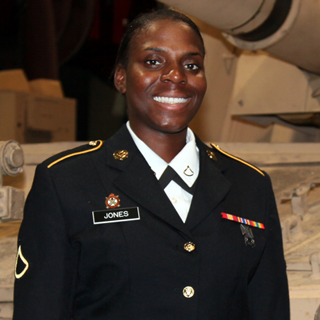
Specialist
Jessica Jones
2013: One of the first female Soldiers to graduate the artillery mechanic course and recognized as her company's honor graduate
READ MORE
Jones made history on July 16, 2013, as one of the first women to attend the U.S. Army Ordnance School's Artillery Mechanic (91P). The 15-week military occupational specialty was, until the beginning of this class, been restricted to male students. Jones and Spc. Angelika Jansen are the first females to hold the military occupational specialty. The course is one of six the Army opened to women as part of an effort to loosen the combat exclusion provisions under the Direct Ground Combat Definition and Assignment Rule.
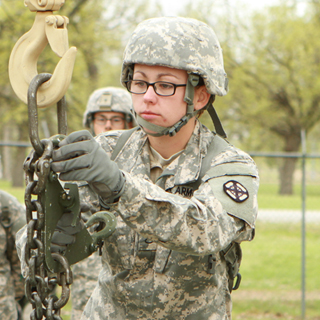
Specialist
Alexandra Seccareccio
2013: The first woman to obtain the multiple launch rocket system crewmember specialty
READ MORE
Then-Pvt. Seccareccio graduated from a military occupational specialty previously closed to females, 13M. The first class of female Soldiers in the 13M multiple launch rocket system crewmember military occupation specialty graduated Advanced Individual Training at Fort Sill, Oklahoma, April 30, 2013.
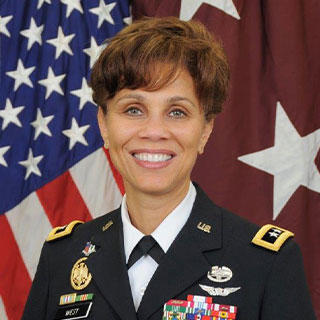
Lieutenant General
Nadja West
2016: Highest-ranking woman to graduate from the U.S. Military Academy
READ MORE
West is also the first black female lieutenant general, the first black female major general of the Army's active component and Army Medicine's first African-American female two-star general.
West is a graduate from the United States Military Academy, West Point, New York, with a Bachelor of Science degree in Engineering. She attended the George Washington University School of Medicine in Washington, D.C., where she earned a Doctorate of Medicine degree.
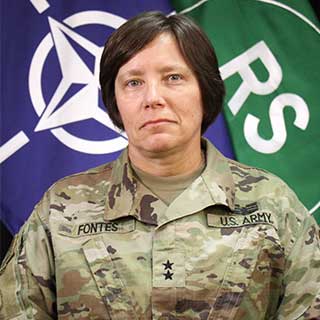
Major General
Robin L. Fontes
2017: First female deputy commanding general of Combined Security Transition Command-Afghanistan
READ MORE
Fontes became the commanding general of Combined Security Transition Command - Afghanistan, July 15, 2017. She is a U.S. Military Academy graduate that spent 12 years in the region, serving in Afghanistan multiple times, as well as in India, Pakistan and Tajikistan. She speaks three regional languages: Russian, Farsi and Dari.
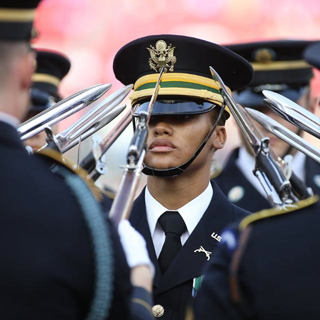
Captain
Lauran Glover
2014: First female commander of U.S. Army Drill Team
READ MORE
Then-1st Lt. Lauran Glover, a military police officer, made history in November 2014 when she was selected as the first woman drill commander of the U.S. Army Drill Team, 4th Battalion, 3rd Infantry Regiment (The Old Guard). Initially, Glover ruled out any chance of joining the USADT because she did not fit the typical mode of the team’s leadership. Traditionally, the commander was an Infantry officer.
In the fall of 2016, she is set to begin a doctoral program in clinical psychology at the American School of Professional Psychology in Washington, D.C. Becoming a psychologist that helps service members has been her goal since joining the Army. Glover said her motivation for joining was to have a shared experiences with members of the military that could help her gain insights. Glover’s advice for the next drill commander is simple: understand the needs of the Soldiers, don’t be afraid to take advice from past members, and put your own initiatives and vision forward to better the team and their situation.
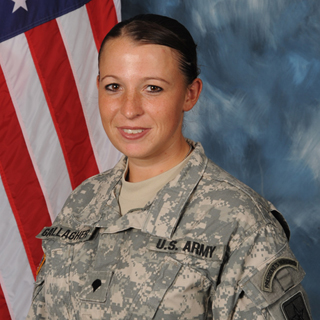
Sergeant
Sherri Gallagher
2010: The first female to be selected as Best Warrior's Soldier of the Year
READ MORE
Gallagher competed against 24 of the Army's finest warriors, representing 12 commands worldwide in the 2010 Best Warrior Competition at Fort Lee, Virginia, Oct. 25, 2010. Described as the "Super Bowl" of Army competitions, the competition tests each competitor's Army aptitude, conquering urban warfare simulations, board interviews, physical fitness tests, written exams, and warrior tasks and battle drills relevant to today's operating environment.
Gallagher is also the first service member to win the national high-power rifle championship in 23 years and the second women ever to win - her mother was the first. In 2012, Gallagher joined the Army's Golden Knights Parachute Team.
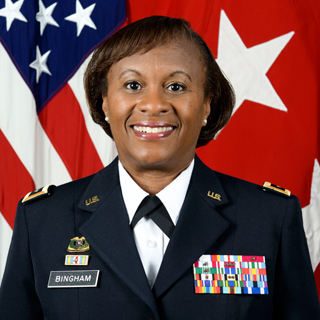
Lieutenant General
Gwen Bingham
2010: First female to serve as quartermaster general
READ MORE
Then-Col. Gwen Bingham was the first female to serve as quartermaster general, November 2010, and pinned as general in April 2011. She also became the first female African-American Quartermaster Corps general and was the first female to serve as the Fort Lee garrison commander.
The Senate confirmed then-Maj. Gen. Gwen Bingham, June 29, for appointment to the rank of lieutenant general, and she was sworn in as the assistant chief of staff for Installation Management. She is the first officer in 10 years to serve as ACISM without also serving as commander of Installation Management Command.
Bingham graduated from Army ROTC from the University of Alabama in August 1981, with a Bachelor of Science degree in General Business Management, a master’s degree in Administration from Central Michigan University, and a master’s degree in National Security Strategy and Resources from the National Defense University.
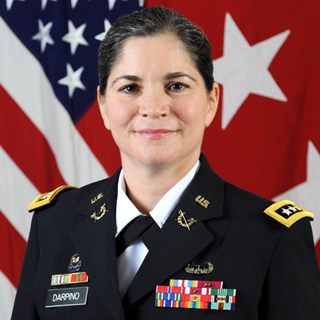
Lieutenant General
Flora D. Darpino
2013: The first female judge advocate general of the Army
READ MORE
Darpino began serving as the 39th judge advocate general of the U.S. Army, Sept. 4, 2013. She was promoted during a ceremony at the Pentagon, and assumed the duties of the position. The judge advocate general serves as the senior uniformed attorney in the Army. Darpino received a Bachelor of Arts degree from Gettysburg College in Gettysburg, Pennsylvania, her Juris Doctor from Rutgers University in New Jersey, and her Master of Laws degree in military law from the Judge Advocate General's School. Darpino received a direct commission into the Army's Judge Advocate General's Corps in January 1987.
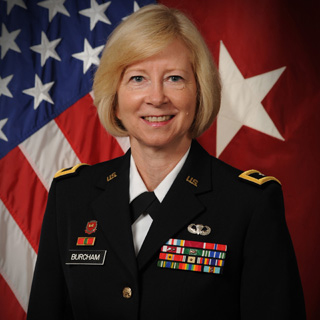
Brigadier General
Margaret W. Burcham
2012: The first woman to be promoted to a general officer in the U.S. Army Corps of Engineers
READ MORE
Burcham was promoted at the Corps' Washington, D.C. headquarters, Jan. 27, 2012. In September 2011, Burcham became the first woman selected to command a Corps of Engineers division when she took command of the Great Lakes and Ohio River Division located in Cincinnati, Ohio. The division consists of seven engineer districts that include more than 4,800 personnel operating in a 17-state region with the responsibility for the federal water resource development throughout the Great Lakes and Ohio River basins.
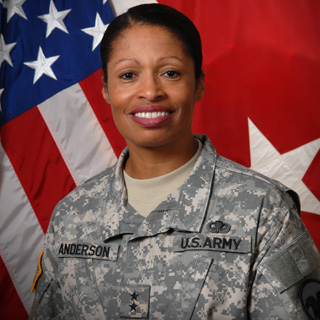
Major General
Marcia Anderson
2011: The Army's first-ever female African-American reserve officer to obtain the rank of major general
READ MORE
Anderson was promoted during a ceremony at Fort Knox, Kentucky, Oct. 1, 2011. She was assigned as the deputy chief of Army Reserve. She had previously assumed responsibility as deputy commander of the U.S. Army Human Resources Command, Oct. 1, 2010. Anderson is employed by the United States Courts, where she serves as the clerk of Bankruptcy Court, Western District of Wisconsin, located in Madison, Wisconsin.
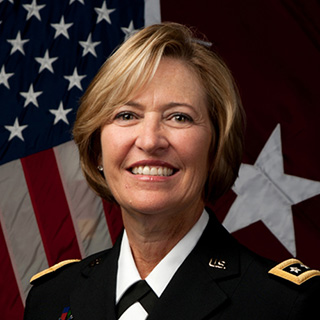
Lieutenant General
Patricia Horoho
2011: The first female and first nurse to become surgeon general of the Army
READ MORE
Horoho was promoted to the rank of lieutenant general and became the 43rd surgeon general of the Army by Chief of Staff of the Army Gen. Ray Odierno during a ceremony, Dec. 7, 2011, at Joint Base Myer-Henderson Hall in Arlington, Virginia. Horoho had previously commanded the Army Nurse Corps since 2008, when she received a rare two-grade promotion from colonel to major general - skipping the rank of brigadier general.
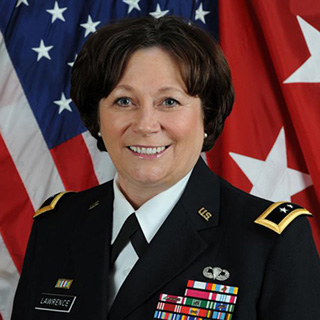
Lieutenant General
Susan S. Lawrence
2011: The first woman in the Army to hold the chief information officer position
READ MORE
Lawrence oversaw a $10 billion annual information technology budget. She joined the Women's Army Corps in 1972 and was commissioned in 1979. Lawrence was named chief information officer in March 2011, after a career in various leadership positions and operational assignments that took her around the world. As the G-6, Lawrence supported the Army chief of staff and Army staff in performing information management, network operations (including computer network defense), force structure, and the equipping and employment of signal forces.
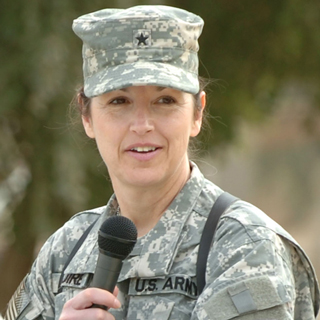
Brigadier General
Colleen L. McGuire
2010: The first female provost marshal general of the Army
READ MORE
During McGuire's nearly 30 years of active service, she was assigned in key command and staff billets from platoon level to the Army staff. McGuire was the 10th commander of Criminal Investigation Command since it was first established as a major command, Sept. 17, 1971, and the 13th provost marshal general of the Army since 1941. She was the first woman to serve in both positions.
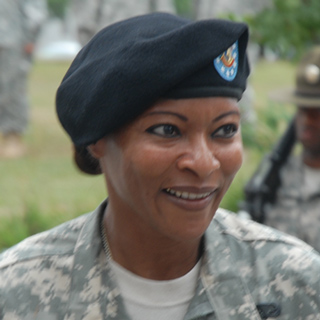
Command Sergeant Major
Teresa King
2009: First female commandant of the Drill Sergeant School
READ MORE
On Sept. 22, 2009, Command Sgt. Maj. Teresa King became the first female commandant of the Drill Sergeant School at Fort Jackson, S.C.
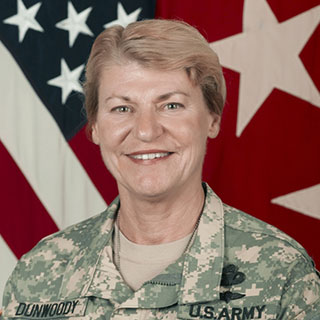
General
Ann E. Dunwoody
2008: The first female four-star general in the U.S. Armed Forces
READ MORE
Dunwoody also became the first female deputy of Army Materiel Command, Nov. 14, 2008, and the first woman to hold her previous position as the deputy chief of staff of the Army for G-4 (Logistics), and to command the U.S. Army Combined Arms Support Command. Approximately five percent of general officers in the Army are women, which includes mobilized Army Reserve and Army National Guard general officers.
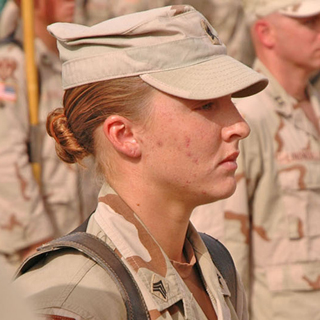
Sergeant
Leigh Ann Hester
2005: The first woman to be awarded the Silver Star Medal for exceptional valor since World War II
READ MORE
Hester received the medal, June 16, 2005. Hester's squad was shadowing a supply convoy, March 20, when anti-Iraqi fighters ambushed the convoy. The squad moved to the side of the road, flanking the insurgents and cutting off their escape route. Hester led her team through the "killzone" and into a flanking position, where she assaulted a trench line with grenades and M203 grenade-launcher rounds. She and Staff Sgt. Timothy Nein, her squad leader, then cleared two trenches, at which time she killed three insurgents with her rifle. When the fight was over, 27 insurgents were dead, six were wounded, and one was captured.
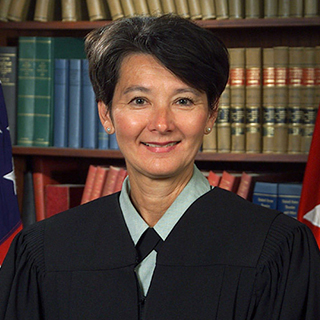
Brigadier General
Coral Pietsch
2001: The first-ever female general officer in the Judge Advocate General Corps
READ MORE
Pietsch was also the first female Asian-American general officer in the U.S. Army. During her military career, Pietsch participated in numerous exercises and deployments throughout the Asia-Pacific region.
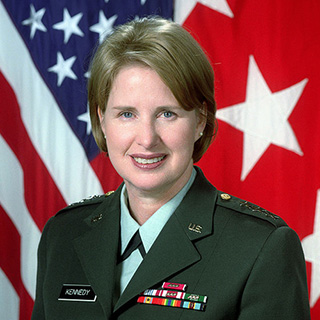
Lieutenant General
Claudia Kennedy
1997: The first woman to achieve and hold the rank of lieutenant general
READ MORE
Kennedy's promotion also led to becoming the Army deputy chief of staff for intelligence, G-2. Kennedy was confirmed by the Senate for promotion to lieutenant general, and assigned to the position of deputy chief of staff for intelligence, May 21, 1997. Her promotion and swearing-in ceremony took place June 17, 1997.
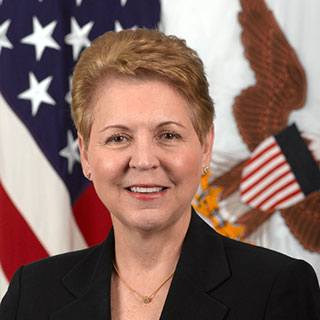
Major General
Jessica Wright
1997: The first female aviation brigade commander and the first female aviator in the National Guard
READ MORE
Wright's 35-year-career of military service culminated in her final assignment as adjutant general of Pennsylvania and commander of the Pennsylvania National Guard. In the Pennsylvania cabinet-level position, she was responsible for command, control and supervision of all Air and Army National Guard units allocated to Pennsylvania, six state-owned veterans' homes, and programs for the state's one million veterans. She previously served as the deputy adjutant general for the Army.
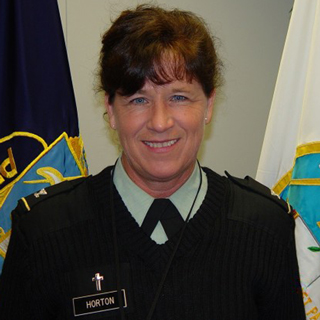
Colonel
Janet Horton
1997: The first female division chaplain and first woman to be promoted to colonel in the Army Chaplain Corps
READ MORE
Horton served in the Army for 28 years. She was at the Pentagon on 9/11, and her prayers helped many people. She met serious resistance as one of the first women chaplains for the Army, but she persevered, and her love healed hateful situations.
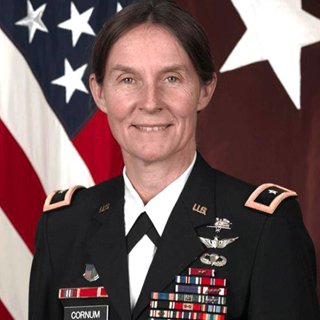
Brigadier General
Rhonda L. Cornum, PhD, MD
1991: The first female flight surgeon to enter into combat
READ MORE
Dr. Cornum entered into combat with the U.S. Army's 2-229th attack helicopter battalion during the Gulf War, Feb. 27, 1991. Then-Maj. Cornum became the first medical officer to graduate Air Command and Staff College and published her prisoner-of-war experience in the book, "She Went to War: The Rhonda Cornum Story." As an Army flight surgeon, serving with the 2/229th Attack Helicopter Battalion during Desert Storm, Cornum's UH-60 Black Hawk helicopter was shot down over Iraq. One of three survivors from the eight-person crew, Cornum was captured by the Iraqi Republican Guard and held as a POW. Her open dialogue from her experiences as a female POW helped drive Congress to expand the roles of women in combat. In addition, her leadership in the aviation and medical communities helped enhance combat performance for hundreds of thousands of Soldiers, Sailors, Airmen and Marines serving around the world.
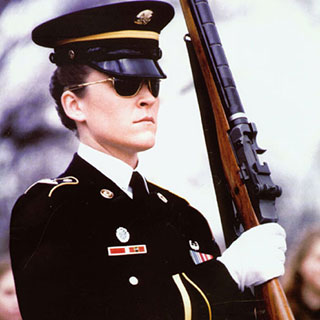
Sergeant
Heather L. Johnsen
1996: The first woman to earn the tomb guard identification badge
READ MORE
Johnsen became the 389th Soldier in 38 years to receive the prestigious badge in 1996. A military police, she served in the Reserves as a personnel administrative specialist, joined the unit in 1994. After serving in the Old Guard for one year, in June 1995 she applied for training as a tomb sentinel. "There is no higher honor, there is no greater honor," said Johnsen. "I can't think of anything else I'd rather do for my country than to guard the unknowns." The badge is a temporary award until the sentinel has honorably served at the Tomb of the Unknowns for nine months.
The 3rd U.S. Infantry (The Old Guard), is the oldest continuously active unit in the Army. Because it is a combat arms unit, The Old Guard did not allow women into its ranks until 1994 when the 289th Military Police Company was attached to it.
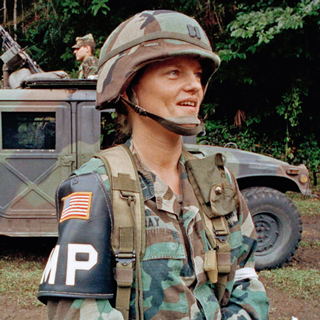
Captain
Linda Bray
1989: The first woman to lead a platoon in combat
READ MORE
In 1989, over 700 women went to Panama in support of Operation Just Cause. Capt. Linda Bray led 30 Soldiers of the 988th Military Police company into combat to seize an enemy objective near Panama City. Her role ignited the debate over the role of women in the combat roles in the Army.
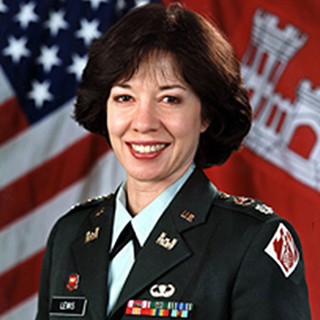
Colonel
Debra M. Lewis
1980: Member of the first class of women to graduate from the U.S. Military Academy at West Point
READ MORE
Lewis' career has been marked by many firsts, including being the first female captain of West Point's highly successful intercollegiate equestrian team, the 1980 Academy Equestrian of the Year, and the first female Soldier to command a U.S. Army Corps of Engineers District in Iraq. She was responsible for overseeing the rebuilding efforts in the region. In total, she has commanded three U.S. Army Corps of Engineers Districts.
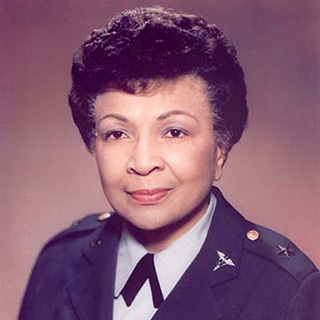
Brigadier General
Hazel Johnson-Brown
1979: First African-American chief of the Army Corps and first African-American female brigadier general
READ MORE
Johnson-Brown was an operating room nurse, who graduated from the Harlem Hospital School of Nursing and joined the Army in 1955. She thought it would be an opportunity that would allow her to explore the world and hone her nursing skills. She had no idea she would become a part of military history. Timing had much to do with Johnson-Brown's success in the military, as she entered the Army shortly after President Harry Truman banned segregation and discrimination in the armed services. Following her retirement, Johnson-Brown enjoyed a distinguished "second" career in academia. She served as professor of nursing at Georgetown University in Washington, D.C., and finally at George Mason University in Virginia. At George Mason University, she was instrumental in founding the Center for Health Policy, designed to educate and involve nurses in health policy and policy design. Johnson-Brown retired from teaching in 1997.
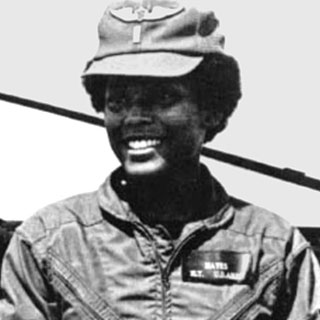
Second Lieutenant
Marcella Hayes
1979: First black female pilot in the U.S. Armed Forces
READ MORE
Hayes is also the first black woman to graduate from Army Flight School in Fort Rucker, Alabama. She received her Army aviator wings in November 1979. Hayes' interest in flying began when she was an ROTC cadet at the University of Wisconsin. Her helicopter flight training required she earn her paratrooper badge as well as pass the rigorous Flight Aptitude Selection Test and the flight physical. Hayes was the 55th woman to earn her pilots wings and she retired from the Army as a Transportation Corps lieutenant colonel.
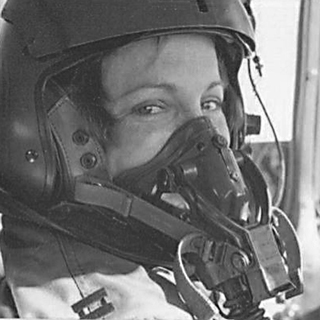
Colonel
Sally Murphy
1974: The Army's first female helicopter pilot
READ MORE
Murphy graduated from the Army Aviation School at Fort Rucker, Alabama. She joined the Army's Women Army Corps in 1972, and entered the aviation school when women were first allowed in. Murphy flew helicopters for the 1st Infantry Division at Fort Riley, Kansas, and commanded the 62nd Aviation Company in Germany and the 78th Aviation Battalion (Provisional) in Japan.
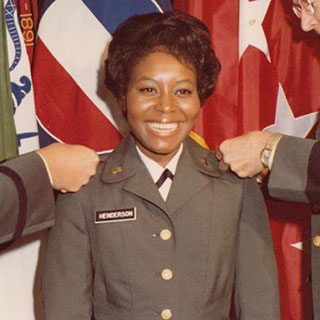
Captain
Alice M. Henderson
1974: The first woman to officially serve in the U.S. Army Chaplain Corps
READ MORE
Henderson was sworn in at U.S. Army Forces Command at Fort McPherson, Georgia, and served in the military for 13 years.
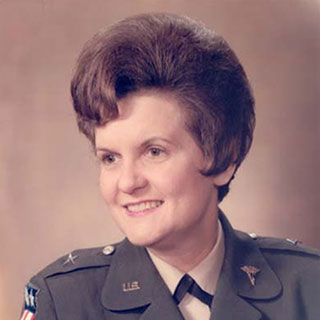
Brigadier General
Anna Mae Hays
1970: The first woman and the first nurse in American military history to attain a general officer rank
READ MORE
Hays received a commission in the Army Nurse Corps in May 1942. Her overseas assignments included service in India, Korea, and Japan. She was promoted to a brigadier general, June 11, 1970. During her tenure as chief, she continued to deal with the imposing challenges of recruitment and retention as the Vietnam War reached its height.
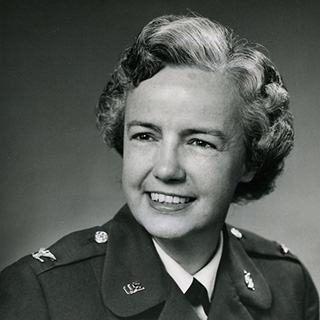
Brigadier General
Elizabeth P. Hoisington
1970: The first Women's Army Corps officer to be promoted to the rank of general officer
READ MORE
Hoisington advanced through the ranks of the Women's Army Corps and served as director of the Women's Army Corps from 1966-1971. Hoisington also became the second woman to be promoted to the rank of general officer, June 11, 1970.
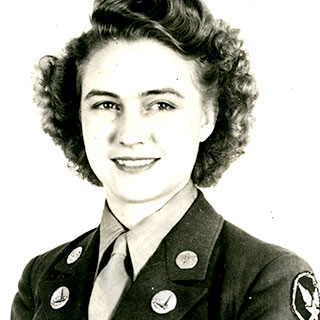
Private First Class
Emma J. Burrows
1945: First crew chief and flight engineer
READ MORE
Before joining the Women’s Army Corps, Burrows-Windham majored in aeronautical engineering at the University of California. She held a civilian pilot's license and was credited with 349 flying hours. Burrows-Windham was the director of flying for the New Mexico Wing of Women Flyers when asked to join the WAC. She served in the European Theater of Operations where her wings were a matter of such curiosity that Military Policemen stopped her on the streets to ask her authority for wearing the air crew member's insignia. Windham earned her wings while stationed at Gore Field, Missouri. Qualifying for the dual rating of crew chief and flight engineer, Windham completed many flights from Montana to Fairbanks, Alaska, and cross-country from Montana to Florida. She passed away, March 31, 1945, when the C-17 she was in collided with a C-47 over England.
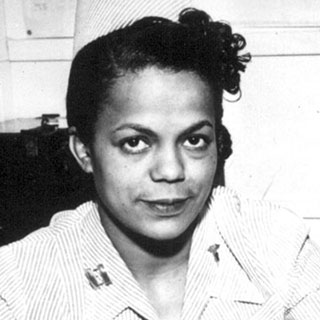
Major
Della H. Raney
1942: First black chief nurse commissioned as a lieutenant in the Army Nurse Corps
READ MORE
Raney was born in Suffolk, Virginia, Jan. 10, 1912. She was a graduate of the Lincoln Hospital School of Nursing in Durham, North Carolina. Approximately 500 black nurses served in the ANC during World War II. Raney was promoted to captain in 1945. After the war, she was assigned to head of the nursing staff at the station hospital at Camp Beale, California. Raney retired in 1978 as major.
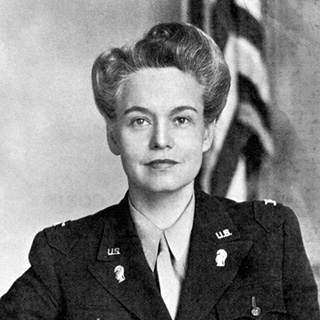
Colonel
Oveta Culp Hobby
1942: The first director of the WAAC and Women's Army Corps and the first Secretary of Health, Education and Welfare
READ MORE
Hobby became the first woman sworn into the Women's Army Corps, July 5, 1943. From 1942 to 1945, Hobby served as director of the Women's Army Corps, and as a result of the success she achieved in this position, was awarded the Distinguished Service Medal. On April 11, 1953, President Dwight D. Eisenhower named her head of the Federal Security Agency, and later that year, she was elevated to a cabinet position in the Department of Health, Education, and Welfare as its first secretary - a position she held until 1955.
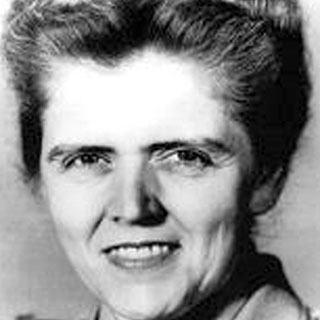
Lieutenant Colonel
Mary A. Hallaren
1943: Commanded the first women's battalion to go overseas
READ MORE
The Women's Auxiliary Army Corps, or WAC, was established in May of 1942. Lt. Col. Mary Hallaren was a member of its first officer training class. Shortly after the first class graduated, U.S. field commanders were calling for a female battalion to help overseas. Hallaren became that battalion's commander. After arriving in England, Halleran began touring the posts and facilities where her WACs would be working. The commandant at the first post she visited welcomed the female Soldiers, but not the regulations that accompanied them. In 1948, Hallaren helped work on the legislation to make WAC a permanent part of the regular Army and Reserves.
